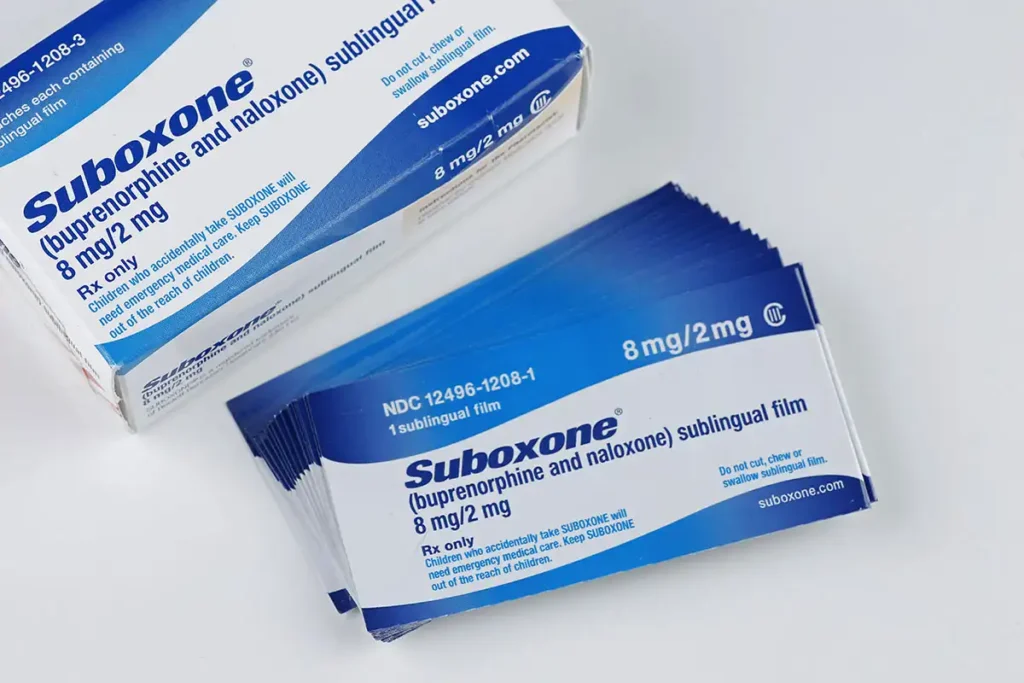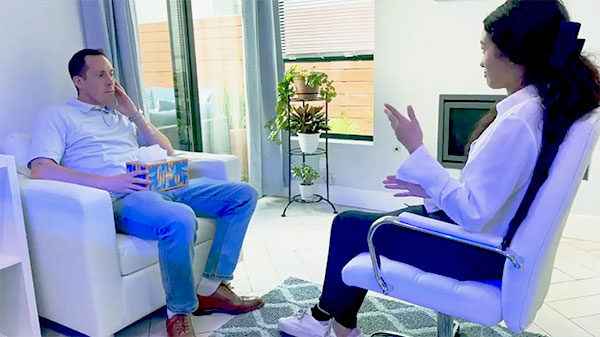Suboxone Addiction Treatment

Suboxone For Detox
Opioid antagonists are drugs that bind to these same receptor sites and block the effects of opioids. For example, a drug like Suboxone® is both an agonist and antagonist that relieves opioid withdrawal symptoms while protecting against further opioid use.
The medications systematically assist in breaking the chain of dependence on prescription pain killers and other opioids such as heroin. The euphoric effects of these drugs are less than with full opioids, and the habit-forming potential is lower. Therefore, it is much easier to stop taking these medications than other full opioids.
Many Suboxone detoxification programs are recognized as painless and proactive. Confidentiality is a high priority for people seeking drug and alcohol detoxification in a dignified and private manner.
Successful use of Suboxone for detox and withdrawal on both male and female opiate users includes management of eleven bodily systems, including; immune, cardiovascular, digestive, nervous, respiratory, skeletal, endocrine, muscular, integumentary, reproductive, and excretory.
4 main benefits of Suboxone Therapy
1. Pain-free Opiate Detoxification
2. Helps Clients Stay in Treatment
3. Reduces Relapses
4. Reduces Overdoses
These benefits are often the difference between success and failure. That’s why it’s a part of our opiate detox programs at all of our addiction recovery centers.
Medication-Assisted Detox is not a treatment by itself. Instead, its primary purpose is to alleviate the uncomfortable effects of withdrawals and cravings to opioids while you re-learn how to live without them. For the greatest long-term benefit and to prevent relapse, this form of medication assisted treatment (MAT) should always be part of a comprehensive program that also includes education, counseling, and intervention therapies.
Utilizing a medication management approach, only 11% of Soft Landing Recovery patients experience relapse. Suboxone®, Subutex®, and Zubsolv® are all buprenorphine-based medications, which is a partial opioid with a much better safety profile than other opioids. It is usually administered as a once or twice daily dose by placing under the tongue or as prescribed by our physicians. Suboxone® is in the form of a film strip and Subutex® and Zubsolv® are in tablet form.

Suboxone Addiction
Some physicians recommend that Suboxone only be used for short-term treatment. The reason behind this recommendation is due to the fact that prolonged use of Suboxone leads to physical dependency to Buprenorphine HCl. This can lead to a more difficult detox procedure if ever that person needed to stop.
Suboxone is up to 40 times stronger than morphine. The half-life of Suboxone is 37 hours. Suboxone’s powerful effects and its long half-life make Suboxone addiction one of the most difficult opioid detoxifications.

How Long Does Suboxone Stay in Your System?
Suboxone (Buprenorphine) will not typically show up in a urine test used to detect Methadone, Oxycodone, Heroin and other opioids. However, it will appear in 12-Panel test targeting Suboxone or Methadone. SO, Suboxone will register on most probation screenings. So, if this is the case, you should declare this to your probation officer prior to taking any tests. You are in fact doing a good thing.
Buprenorphine levels will fall below fifty percent after 37 hours of abstinence. As a result, it can take up to 8 days to fully exit your system. But this of course depends on body size/weight, health and dosage prior to stopping.
Suboxone Detox and Withdrawal
Suboxone Treatment Programs with the highest client satisfaction use a system of detox that incorporates:
- Addiction Physician Protocols
- Hydration Therapy
- Nutrition Supplementation
- Sleep Disorder Therapy
- Extensive Counseling
Subutex and Suboxone are often used in unison. Subutex is usually prescribed initially to minimize the risk of inducing opiate withdrawals. Once the risk of initiating opiate withdrawal syndrome subsides; the opiate treatment plans change, and Suboxone replaces Subutex.
Suboxone Detoxification
The Suboxone detoxification program is divided into three distinct phases:
1. Induction – the first phase of stabilizing an opiate addict. Suboxone is the first tablet administered sublingually after the user shows signs of opiate withdrawals.
2. Stabilization – replaces the opened opiate receptors in the brain. The stabilization phase is an individualized medication adjustment period that lasts between twenty-four to 36 hours.
3. Taper – We have seen the greatest success when physicians that use a 3 day step down. The medication dosage drops 2mg every three to four days. The final taper is a stagger; 2mg every other day for three additional administrations.
In short, precipitated withdrawal is a very quick and intense onset of opiate withdrawal symptoms. It’s like quitting opiates but jumping from day one withdrawal to day four withdrawal, really bad. It is relatively uncommon but bad enough that it should be avoided. The precipitated withdrawal with Buprenorphine happens because of it’s high binding strength to opiate receptors, so basically the Buprenorphine pushes out the opiates in your brain and fills the opiate receptors with Buprenorphine (in Suboxone) so it’s almost like jumping from no withdrawal to day four withdrawal intensity — and can even be dangerous. Buprenorphine is strong stuff– it beats the crap out of opiates and displaces the opiates from your opiate receptors taking you to hell in a hurry.
Well to be honest, if you are affected by precipitated withdrawal, you are going to feel rapid onset of opiate withdrawal symptoms, much faster than cold turkey, and no this will not reduce the “detox” time. Common sense would say, take some opiates, the Suboxone isn’t working, but taking opiates once precipitated withdrawal has occurred would not be helpful because your receptors are blocked by the Buprenorpine which has a much stronger “hold” on the receptors than opiates rendering the opiates nearly useless. The best advice I can give if this happens is go to the hospital and explain what happened, they can give you medicine to reverse the situation and make you feel better.
You need to restrict intake of opiates for a period of time before taking Suboxone, basically, you should be in some form of withdrawal. If you are not in some pain you are risking precipitated withdrawals.
